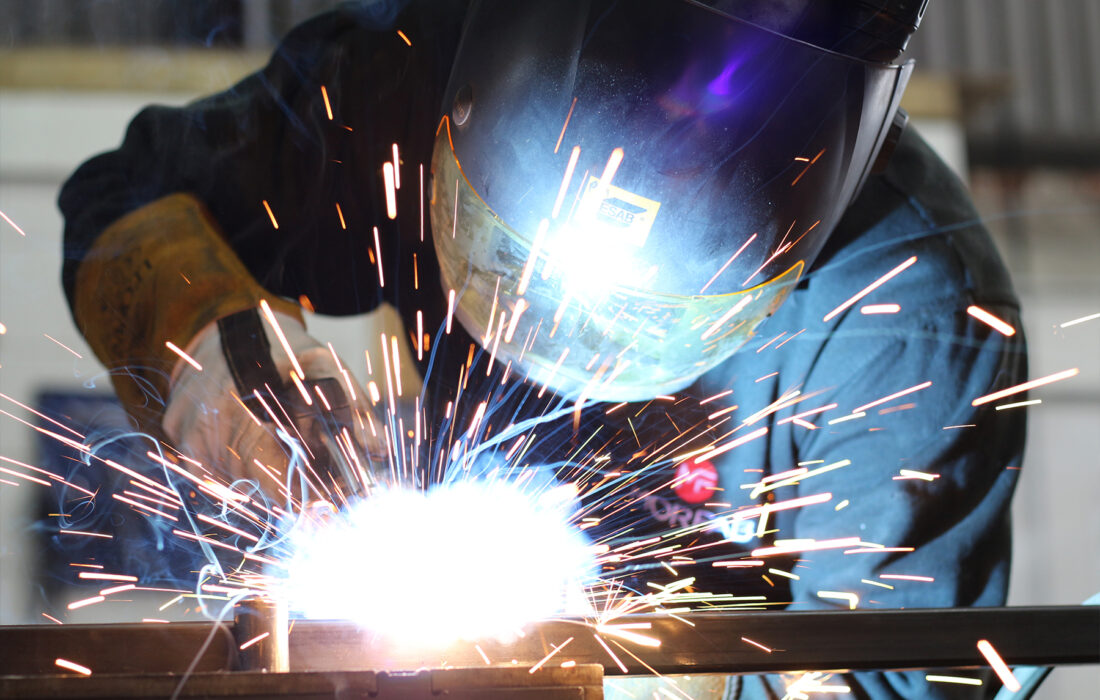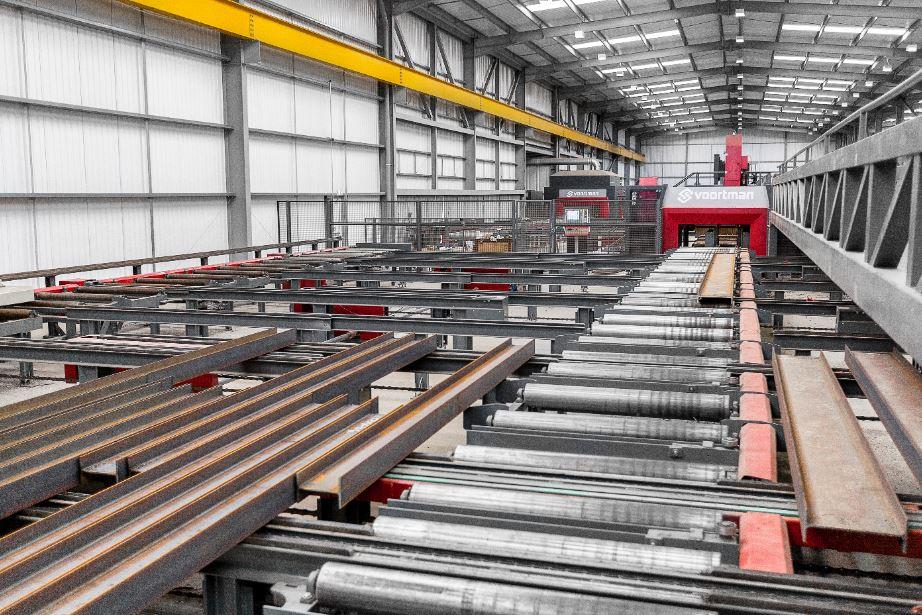Ingenious Patterns in Steel Construction: Enhancing Toughness and Precision
In the realm of steel manufacture, the quest of resilience and precision has actually resulted in a wave of cutting-edge patterns that are reshaping the sector. From developments in welding technologies to the assimilation of robotic automation in manufacture processes, the landscape of steel manufacturing is developing swiftly. High-strength alloy advancement, coupled with the use of 3D modeling and simulation software program, is pressing the limits of what is possible in terms of architectural integrity and precision. Moreover, the expanding focus on sustainable techniques in steel production is not only driving performance but additionally fostering a much more environmentally conscious approach to manufacture. These trends are not just forming the here and now but likewise preparing for the future of steel fabrication, promising additional improvements in durability and precision.
Advanced Welding Technologies
In the realm of steel fabrication, the adoption of advanced welding innovations has substantially reinvented the sector's strategy to attaining premium quality and precision in architectural welds. Advanced welding technologies, such as laser beam welding and rubbing mix welding, have actually arised as game-changers in the field. Laser beam welding employs a focused laser light beam to sign up with metal components with amazing accuracy and rate, making it excellent for thin products and detailed styles. On the other hand, friction mix welding produces extremely strong bonds by mechanically intermixing the particles of the materials at the joint, removing the need for thawing the metal. These innovations offer numerous advantages, consisting of decreased heat-affected areas, very little distortion, and improved mechanical homes in the welded joints. By leveraging these innovative welding techniques, steel makers can raise the sturdiness, strength, and accuracy of their structural welds, fulfilling the progressively demanding needs of modern building and construction jobs.
Robot Automation in Fabrication
Accepting robot automation has ended up being a keystone of modern-day steel fabrication methods, improving and enhancing procedures performance across the market. Robots are reinventing the means steel components are manufactured, providing unmatched precision and speed while decreasing human error. These automated systems can manage recurring jobs with regular precision, leading to higher quality final result.
One trick benefit of robotic automation in steel construction is the capacity to function all the time without exhaustion, dramatically increasing production output. This continuous operation minimizes downtime and accelerates project timelines, ultimately saving prices for producers. Additionally, robots can be set to perform intricate jobs that might be tough or harmful for human workers, improving safety in the office.
In addition, robotic automation makes it possible for seamless combination with various other electronic technologies, such as computer-aided style (CAD) software and Internet of Things (IoT) systems (Alpha reo). This interconnected method improves interaction between different stages of manufacture, optimizing process and making sure real-time surveillance and control. As the steel fabrication industry remains to progress, robot automation stands out as a transformative force driving efficiency and precision in producing procedures

High-Strength Alloy Development
The development of high-strength alloy development in steel fabrication is improving the sector's strategy to boosting product longevity and efficiency. High-strength alloys are crafted to show premium mechanical properties, such as increased tensile toughness, sturdiness, and deterioration resistance contrasted to standard steel grades. By incorporating these advanced alloys into construction processes, producers can generate hop over to here elements that withstand greater stress and anxiety degrees and extreme atmospheres, resulting in more sturdy and trusted final result.
One key advantage of high-strength alloy advancement is the ability to decrease material density without jeopardizing architectural stability. This not only causes lighter-weight elements but additionally adds to set you back savings and improved effectiveness in fabrication and setting up processes. Moreover, the improved strength-to-weight ratio of these alloys permits for the design and building and construction of structures with greater load-bearing capabilities while decreasing general weight.
3D Modeling and Simulation Software Application
Improvements in steel construction processes have been dramatically thrust by the assimilation of cutting-edge 3D modeling and simulation software devices. These devices enable fabricators to produce thorough online versions of their projects, enabling them to picture the final item with precision prior to any physical work begins.

Sustainable Practices in Steel Production
Incorporating lasting techniques into steel manufacturing procedures is vital for decreasing environmental influence and making sure lasting resource accessibility. One essential lasting practice is the adoption of energy-efficient innovations to decrease greenhouse gas exhausts during the steel production procedure. This includes making use of renewable energy resources, such as solar or wind power, to power steel plants and executing energy-efficient equipment to maximize energy usage.
An additional essential element of sustainable steel production is the accountable sourcing of resources. This involves making certain that the iron ore and other resources made use of in steelmaking are gotten from moral and eco pleasant resources. By advertising openness in the supply chain and sticking to stringent ecological standards, steel suppliers can lessen the negative effects of resource extraction on regional ecological communities and communities.

Final Thought
In verdict, the ingenious trends in steel construction such as sophisticated welding modern technologies, robotic automation, high-strength alloy advancement, 3D modeling and simulation software application, and lasting practices are enhancing the durability and accuracy of steel products. These advancements are transforming the steel construction industry by enhancing performance, top quality, and sustainability. It is clear that the future of steel construction depends on accepting these sophisticated technologies to satisfy the demands of contemporary construction and production markets.
In the realm of steel construction, the quest of durability and accuracy has led to a wave of cutting-edge trends that are improving the industry.In the realm of steel manufacture, the adoption of advanced welding technologies has actually substantially revolutionized the industry's strategy to attaining exceptional quality and precision in structural welds. As the steel fabrication blog here market continues to progress, robot automation stands out as a transformative force driving efficiency and accuracy in making procedures.
In addition, recycling and reusing steel scrap and waste products play a significant function in improving the sustainability of steel manufacturing. steel click to investigate fabrication melbourne.In final thought, the cutting-edge patterns in steel manufacture such as sophisticated welding technologies, robot automation, high-strength alloy growth, 3D modeling and simulation software program, and sustainable techniques are enhancing the toughness and precision of steel products